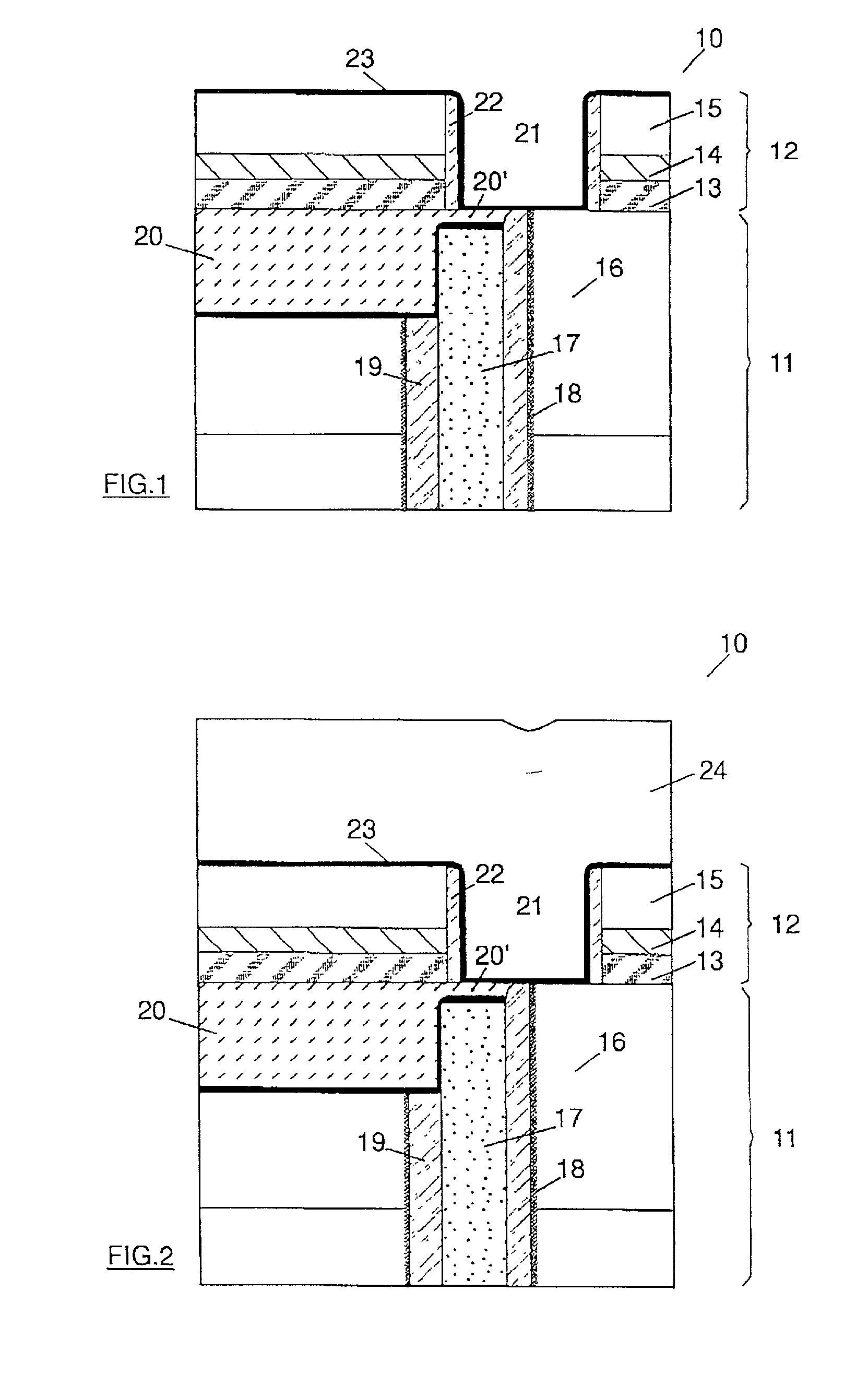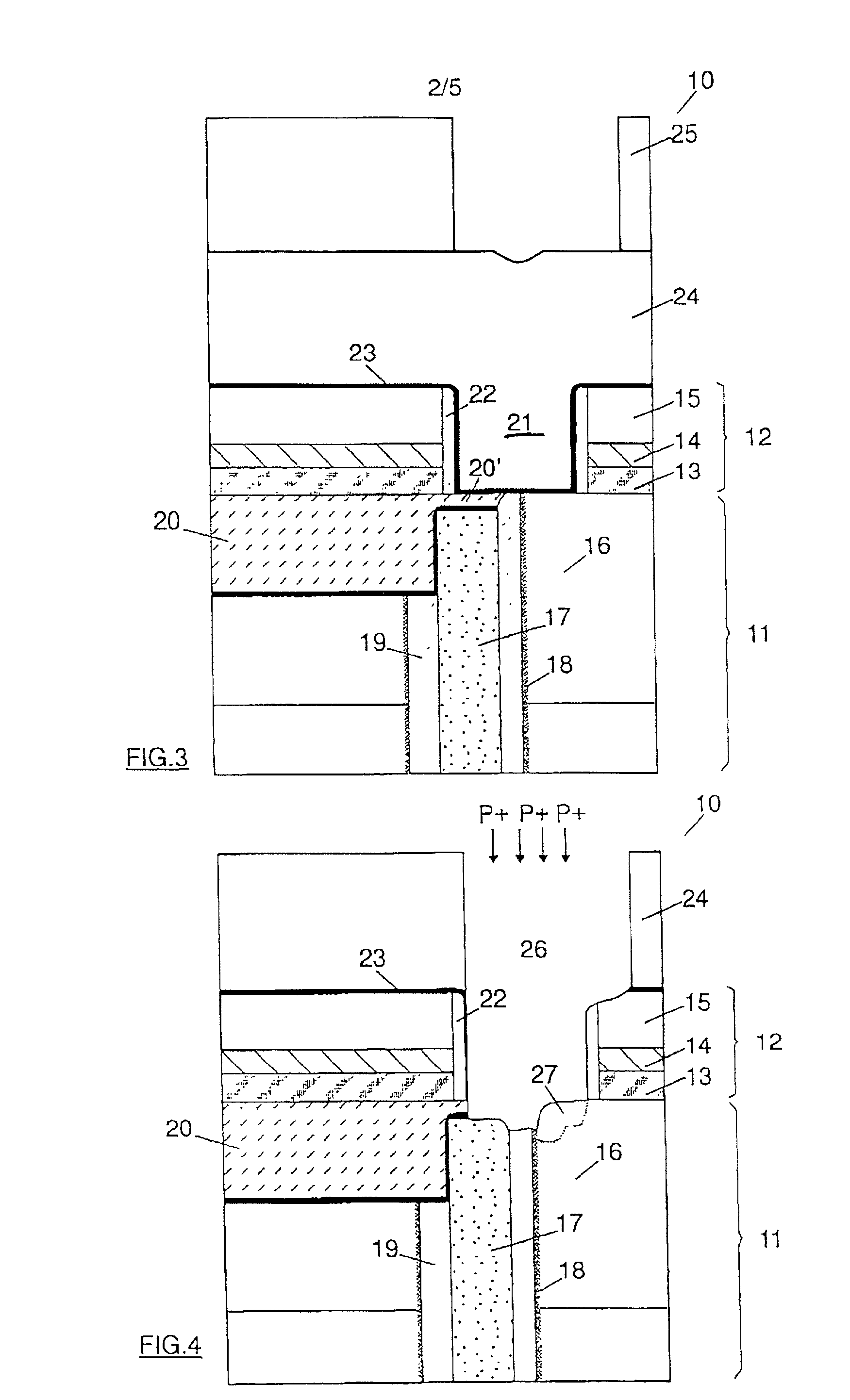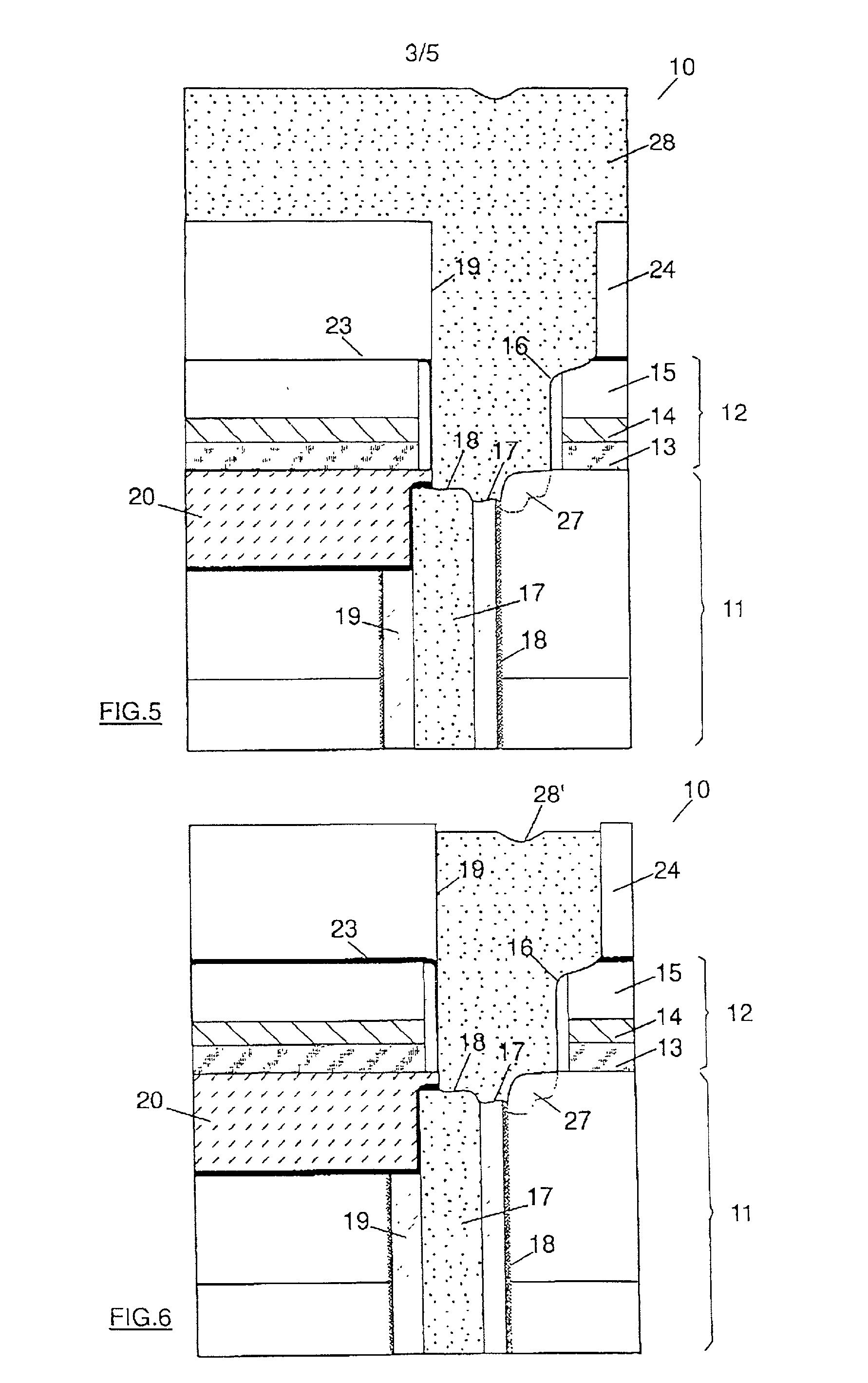Method of plasma etching doped polysilicon layers with uniform etch rates
a technology of arsenic doped polysilicon and plasma etching, which is applied in the direction of basic electric elements, semiconductor/solid-state device manufacturing, electrical equipment, etc., can solve the problems of poor uniformity of first sub-etch steps within the same wafer, non-functional memory cells, and poor uniformity of first sub-etch steps, etc., to achieve accurate control, and high level of thickness uniformity
- Summary
- Abstract
- Description
- Claims
- Application Information
AI Technical Summary
Benefits of technology
Problems solved by technology
Method used
Image
Examples
Embodiment Construction
[0027] Applicant's inventors have discovered that the plasma etching process of the prior art could be significantly improved only if both the wafer plasma environment and the etching chemistry were changed during the first sub-etch step.
[0028] Firstly, the etching of the doped polysilicon layer must be conducted with a plasma that is perfectly uniform all over the wafer surface and this can be obtained only if the wafer is placed on an electrostatic chuck device (ECD). Electrostatic wafer holding has become very desirable in the vacuum handling and processing of semiconductor wafers for a number of reasons. However, the specific feature which is important here is only the absence of clamps (or grippers) that are of general use on the other types of wafer holders. The absence of clamps has been appreciated so far as a source of contamination reduction. Without clamps, less cracks are produced in the wafer during the handling and processing operations. As a result, it has been notice...
PUM
 Login to View More
Login to View More Abstract
Description
Claims
Application Information
 Login to View More
Login to View More - R&D
- Intellectual Property
- Life Sciences
- Materials
- Tech Scout
- Unparalleled Data Quality
- Higher Quality Content
- 60% Fewer Hallucinations
Browse by: Latest US Patents, China's latest patents, Technical Efficacy Thesaurus, Application Domain, Technology Topic, Popular Technical Reports.
© 2025 PatSnap. All rights reserved.Legal|Privacy policy|Modern Slavery Act Transparency Statement|Sitemap|About US| Contact US: help@patsnap.com



